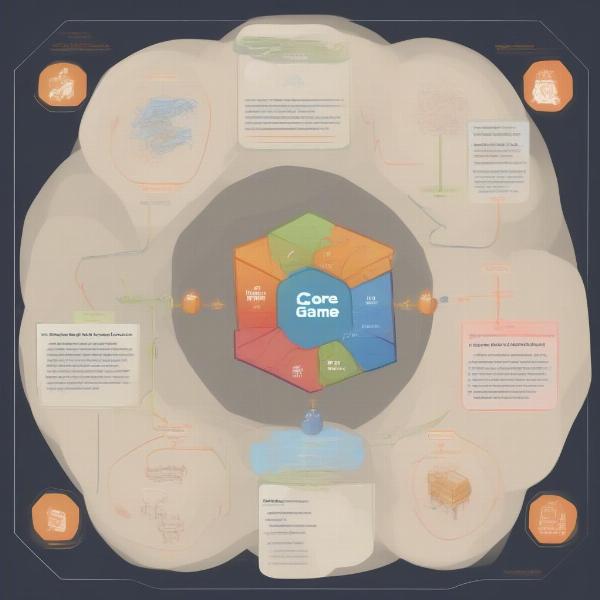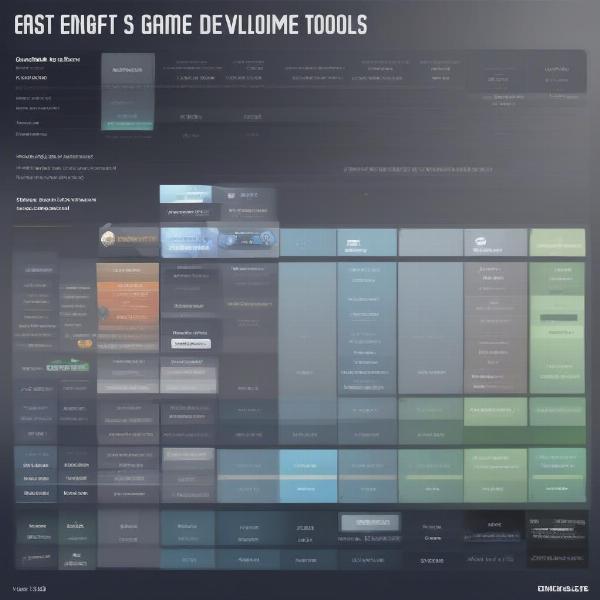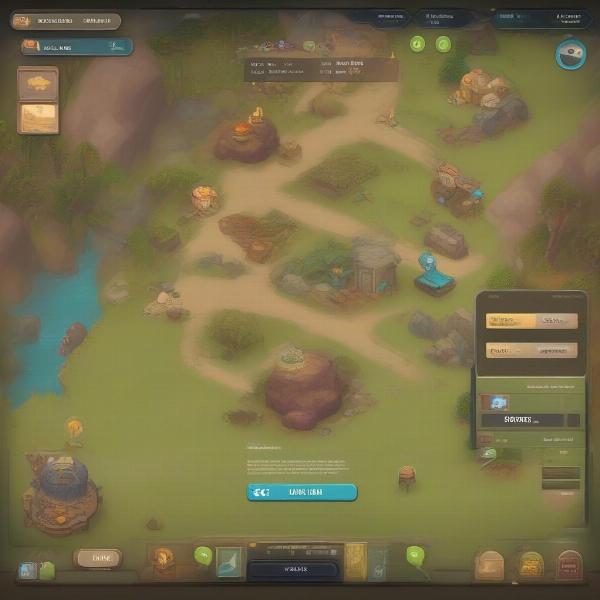Idle games, also known as incremental games, have captivated players with their simple yet addictive gameplay. Their popularity stems from the satisfying feeling of progression and the ability to play passively. But how do you create an idle game that hooks players and keeps them coming back for more? This comprehensive guide will delve into the intricacies of idle game development, providing you with the knowledge and tools to bring your own idle game idea to life.
Similar to how compelling sound design enhances a game, the core mechanics of an idle game are crucial for its success. how to create game sound effects offers valuable insights into creating immersive audio experiences, a concept that parallels the importance of well-designed idle mechanics.
Understanding the Core Mechanics of Idle Games
The heart of any idle game lies in its core loop. This loop, often deceptively simple, is the engine that drives player progression. It usually involves generating resources automatically, using those resources to purchase upgrades, and then generating resources at an even faster rate. This cycle repeats, creating a compelling sense of growth and achievement.
Key Elements of the Idle Game Loop
- Resource Generation: This is the foundation of your game. Resources can be anything from gold and cookies to energy and clicks. The key is to make the generation automatic, allowing players to progress even when they’re not actively playing.
- Upgrades: Upgrades are the primary way players interact with the game. They increase resource generation rates, unlock new features, and offer a sense of tangible progress. Balancing upgrade costs and benefits is crucial for a satisfying gameplay experience.
- Prestige Systems: Prestige systems are a common feature in idle games, allowing players to reset their progress in exchange for permanent bonuses. This adds a layer of strategic depth and provides long-term goals for players to strive for.
 Idle Game Core Loop Diagram
Idle Game Core Loop Diagram
Designing Engaging Progression Systems
While the core loop is essential, it’s the progression system that truly determines an idle game’s longevity. A well-designed progression system keeps players engaged by constantly offering new challenges and rewards.
Balancing Progression and Challenge
One of the biggest challenges in designing an idle game is balancing progression and difficulty. The game should be easy enough to pick up and play, but challenging enough to keep players coming back. This often involves carefully tuning the cost of upgrades and the rate of resource generation.
Implementing Prestige Systems Effectively
Prestige systems should be carefully integrated into the gameplay loop. They should offer significant benefits, but also require a meaningful investment of time and resources. This ensures that prestige feels like a rewarding accomplishment rather than a tedious chore.
“A well-designed prestige system is like a mini-game within the idle game,” says renowned game designer, Amelia Hart. “It gives players a new objective to pursue and a fresh sense of progression.”
Choosing the Right Development Tools
The choice of development tools can significantly impact the development process. There are various game engines and programming languages suitable for creating idle games.
Popular Game Engines and Languages
- Unity: A versatile engine with a large community and ample resources.
- GameMaker Studio 2: A user-friendly engine well-suited for 2D games.
- Godot Engine: A free and open-source engine gaining popularity for its ease of use.
If you’re interested in using Godot specifically, you can find a detailed guide on how to make an idle game in godot.
 Game Development Tools Comparison Chart
Game Development Tools Comparison Chart
Monetization Strategies for Idle Games
Monetization is an important consideration for many developers. There are several ethical and effective ways to monetize an idle game.
In-App Purchases and Advertisements
- In-App Purchases (IAPs): Offer optional cosmetic items, boosts, or premium currency. Ensure IAPs don’t feel pay-to-win and don’t disrupt the core gameplay experience.
- Advertisements: Implement non-intrusive ads, such as rewarded video ads or banner ads, to generate revenue without hindering the player’s enjoyment.
“Monetization should enhance, not detract from, the player experience,” advises experienced game developer, David Chen. “Focus on offering value to players, and they’ll be more receptive to supporting your game.”
Polishing Your Idle Game
Creating a polished and enjoyable experience is crucial for retaining players.
User Interface and User Experience (UI/UX)
- Intuitive UI: Design a clear and easy-to-navigate user interface. Players should be able to understand the game’s mechanics and access information effortlessly.
- Smooth UX: Ensure a smooth and responsive user experience. Minimize loading times and optimize performance to prevent frustration.
 Example of Good UI/UX in an Idle Game
Example of Good UI/UX in an Idle Game
Expanding Your Idle Game
Once your core game is solid, consider expanding its content to keep players engaged long-term.
Adding New Features and Content
- New Resources and Upgrades: Introduce new resources and upgrades to add depth and complexity to the gameplay.
- Achievements and Challenges: Implement achievements and daily challenges to give players short-term goals and rewards.
- Social Features: Consider adding social features like leaderboards and guilds to foster a sense of community.
You might also consider exploring if your game could benefit from being on a service like Game Pass. Learn more about this in our article is god of war on game pass.
Conclusion
Creating a successful idle game requires careful planning, balanced design, and a deep understanding of player psychology. By focusing on a compelling core loop, engaging progression systems, and a polished user experience, you can create an idle game that captivates players and stands the test of time. Start small, iterate based on feedback, and don’t be afraid to experiment. The world of idle games is vast and full of possibilities, waiting for your unique contribution. So, are you ready to create the next big idle hit?
FAQ
- What is the most important aspect of an idle game? The core loop is the foundation of any successful idle game.
- How do I balance progression and difficulty? Carefully tune the cost of upgrades and the rate of resource generation.
- What are some effective monetization strategies? Consider non-intrusive ads and optional in-app purchases.
- Which game engine should I use? Popular choices include Unity, GameMaker Studio 2, and Godot Engine.
- How can I keep players engaged long-term? Add new content, features, and challenges regularly.
- What is a prestige system? A system that allows players to reset progress for permanent bonuses.
- How can I improve the UI/UX of my game? Focus on clarity, ease of navigation, and responsiveness.

